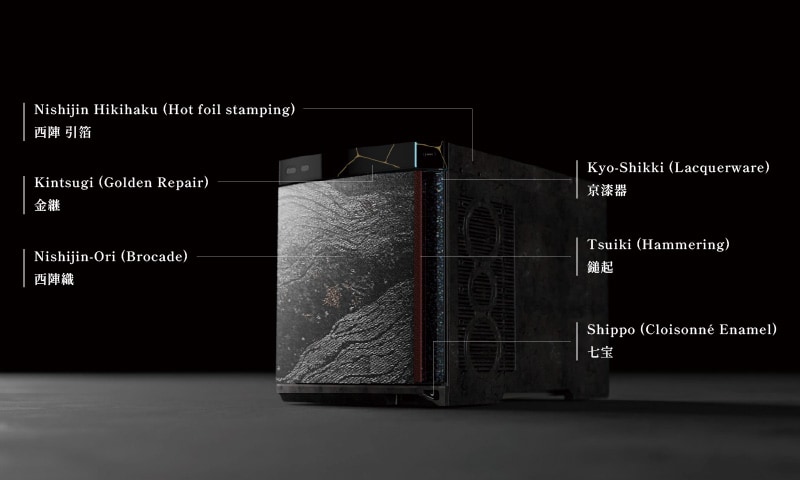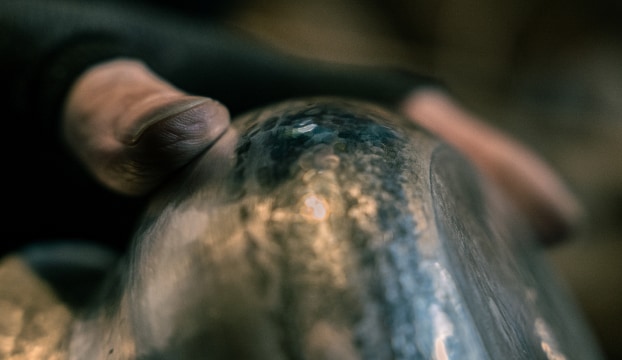These instruments analyze gases and volatile liquids. They are used for the separation, and quantitative and qualitative analysis of mixtures. A feature of such instruments is the separation of components using a carrier gas (mobile phase), and they are used in a variety of fields, including chemistry, pharmaceuticals, the environment, petroleum, and food.
We used image generation AI to create a pattern based on an original Shimadzu design, which represents the principles of gas analysis. This design was woven using the nishijin-ori silk weaving technique and then applied as a finish to the front door. Tsuiki metalwork has been applied to the handles and the distinctive texture created by working the material by hand produces a sense of luxury. It is also designed so that people can enjoy the way the hues of the baked lacquer change over time. Further, metal foil is applied that changes color with exposure to the air, so the longer it is used, the deeper the colors become, creating an analytical instrument that will be cherished for a long time.






A proprietary design was created using AI image generation. Carbon fibers were woven in using the nishijin-ori technique, creating a front door with functionality that minimizes the impact of exposure to electromagnetic waves.

A gas analysis pattern is added to the top of the control buttons using delicate silver threads. The patterns and deep colors of the glass create a small woven universe.

Not only does repairing an instrument make it last longer but the process of repairing becomes etched into the design. This increases the user’s attachment to the instrument and changes it from a machine into a partner. Proposing sustainability in the form of an analytical instrument that is used for a long time.

Metal oxidizes with the passage of time, and a unique color and texture is formed depending on how it is used, the environment it is in, and the passage of time. These materials create a sense of change over time rather than simply deterioration the longer they are used.


Unique surface texturing is formed by manually hammering out metal. When this surface is lacquered and baked, the lacquer adds antibacterial properties while dissipating heat from the instrument that is transmitted via the metal parts. With use, the color of the lacquer changes, creating a sense of attachment to the instrument that strengthens the more it is used.


The phenomenon of chromatography, in which components are separated and analyzed, is expressed by the particles of shells used in raden inlay. Raden inlay causes light striking the flat components to be reflected as the colors of the rainbow and can be used as a decorative element in various places.



